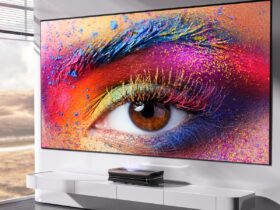There are too many properties around the world that are much too difficult to navigate. You don’t want your properties to fall under that category. Enter: Wayfinding.
Effective wayfinding solutions created by the best wayfinding and signage companies in Dubai provide visitors to your property with sufficient confidence. Thanks to that, they then believe in their ability to get themselves where they need to go – even if they have never been to that place before.
Wayfinding utilizes images and messaging (maps, directories, locators, room numbers, etc.) to familiarize visitors with the surrounding environment. By devising a logical flow of information, visitors are going to feel a lot less confused, stressed, and fatigued while in your space.
In today’s competitive real estate market, wayfinding is particularly crucial for enhancing the visitor experience. For property owners, managers, and top property agent in Singapore, wayfinding can help save time and money, while also building their brand reputation. Think about it: The first interaction a visitor will probably have with your property is the wayfinding signage (or lack thereof). This makes it the earliest – and most important – impression of your brand.
If you are an estate agent, here are four key things you need to know and understand about wayfinding:
1. Wayfinding is exceptionally beneficial for real estate.
Whether it is an urban center or health care facility, an educational campus, or a transportation hub, all properties can benefit significantly from wayfinding done well.
This also extends to all residential, commercial, industrial, and land properties. Whether you are dealing with newly constructed properties, remodels, relocations, renovations, or expansions, a thorough wayfinding system assists you in simplifying complicated, overwhelming or developing environments. This, in turn, helps you to enhance the function of the space and the experience of the visitor.
Furthermore, it presents information without requiring human resources. In other words, it supports customer service while simultaneously refining business operations. In contrast to many other requirements of an extensive build-out, wayfinding can be relatively low in cost yet high in benefit.
2. Wayfinding is linked to brand identity.
Additionally, a well-done wayfinding system boosts your brand presence to entice local awareness and attention. It guides people to your property and encourages them to enter. A cohesive combination of interior and exterior signage makes your estate, facility, or building appear and feel sleek, professional, and efficient. As its purpose is to connect people to places, wayfinding shows visitors that you have considered their experience on your property.
For this reason, you want your wayfinding signage to be consistent and cohesive across all wayfinding markers so that they are quickly recognizable to visitors. While in the design process of your wayfinding signage, make sure to follow rules that oversee sign design and adhere to them as much as you would other aspects of your firm’s branding.
3. Wayfinding requires a smart strategy.
Undoubtedly, you are going to have to work with professional wayfinding designers to ensure that your system integrates with the new or existing space.
When looking for a team to work with, make sure that you find a design company that is good at listening – especially at the beginning. After all, there is a good chance that you have a profound understanding of the problems and challenges that your future wayfinding system needs to resolve. A robust and capable wayfinding system aligns with your overall vision for the project.
Once you and the designers are on the same page about the wayfinding goals, you then want to dissect the project. This exercise helps you to imagine the system from a new visitor’s perspective. By examining the workflow and traffic flow of the area, you can take into account how bodies move around in and interact with the space. This will significantly help in anticipating future user needs. Try to imagine yourself visiting for the first time, and then identify the points that would confuse you.
4. Wayfinding is all about the design.
Your wayfinding solution has to defeat the current obstacles while also improving the user experience and building your brand reputation. However, it also needs to be creative in its application. From sightlines and visual barriers to language and disabled visitors, the design of your wayfinding system needs to weigh a variety of factors to ensure that it is accessible for everyone to comprehend, even if they are at a distance or moving in their vehicle.
A top wayfinding design company is able to utilize their knowledge and skills in type, color, materials, mounting, lighting, and more to make sure that your chosen designs fulfill all these criteria. But, remember, wayfinding does not have to be boring. Instead, the right designs can enhance and adorn your space.
For example, look to create depth by adding various textures and overlays to your directional signs. Or, in the hallways, install back-lit signs and fuse identification signage into murals, door graphics, etc. In other words, look for unique designs that complement your branding and decor.
Of course, you also have to recognize city and owner regulations and restrictions. Otherwise, all your hard work may be for nothing if your designs are not approved. Make sure to work with a wayfinding design company who will package your plans, exhibit them to the appropriate review boards, and consult with them for final approval.
Final Thoughts
If you are considering implementing a wayfinding system, then it is in your best interest to work with a full-service wayfinding and signage company. You want to partner with professionals who have in-depth knowledge of branding, signage, and graphics, as well as of human behavior. You want them to understand the way that individuals make decisions and move through an area. Furthermore, by bringing in outside help, you are far more likely to stay on-time and on-budget. You also don’t need to worry about making costly beginners mistakes.
Are you an estate agent who is considering using wayfinding and signage? Why or why not? Do you have any experience with properties that do utilize this system? Let us know your thoughts and any relevant experiences in the comments below!
AUTHOR BIO
Zak Zakaria is a Waymaker at dezigntechnic in Dubai who also previously worked as the company’s Graphic Designer and Art Director. Zak is a creative with work experience in multiple multinational agencies such as JWT and Saatchi & Saatchi. Signage design is a family business, making Zak’s personal experience with signage his longest professional commitment.





